When it comes to raw power, loyalty, and awe-inspiring capabilities, certain dog breeds stand head and shoulders above the rest. But determining the “strongest” dog isn’t just about size or muscle—it’s a blend of bite force, endurance, historical roles, and sheer determination. Let’s dive into the world of canine powerhouses and discover which breeds truly reign supreme.
What Is the Strongest Dog on Earth? This question confuses us; if we talk about powerful dogs, then there are many powerful dogs on earth that have been described.
Table of Contents
Kangal – The Ultimate Guardian Dog
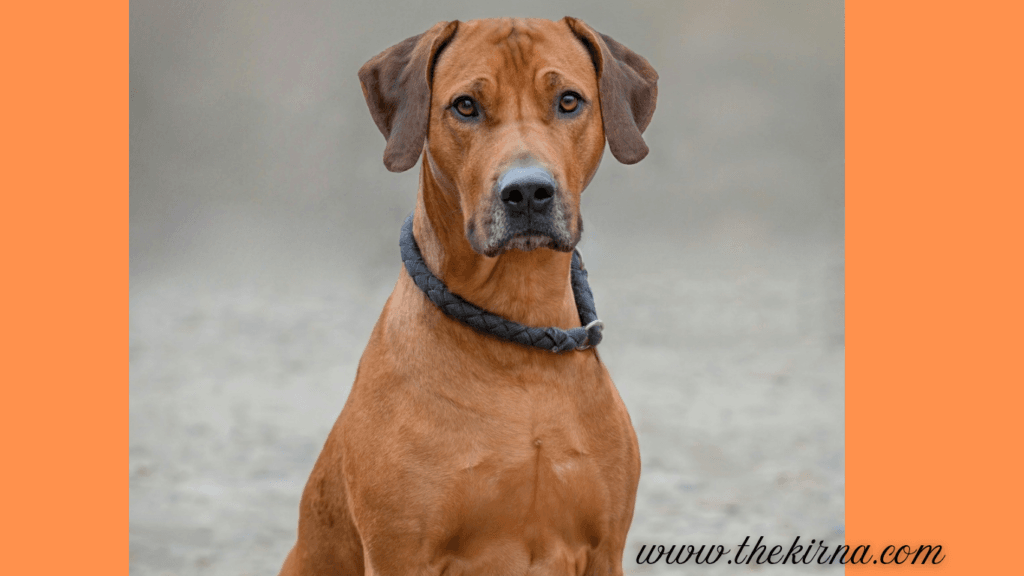
The Kangal is widely recognized as the strongest dog on Earth, primarily due to its incredible bite force of 743 PSI (pounds per square inch).
This massive power surpasses that of most wild predators, making the Kangal an unrivaled guardian in the canine world. Originating from Turkey, these majestic dogs were bred to protect livestock from wolves, bears, and jackals in harsh rural environments.
Their impressive strength, intelligence, and loyalty make them one of the most respected working dog breeds today.
Strength Beyond Measure
The Kangal’s strength isn’t just about its bite. It boasts a muscular build, high endurance, and incredible agility—essential traits for defending flocks against formidable predators. With a large, powerful frame, males typically stand 28 to 34 inches tall and weigh between 90 to 150 pounds. Despite their size, they move with remarkable speed and precision, capable of chasing off threats in an instant.
Bite Force Champion
With a bite force stronger than a lion’s, the Kangal is in a league of its own. This incredible power allows it to disable large predators with a single bite, making it an invaluable asset to shepherds. However, unlike aggressive breeds, Kangal do not attack without reason—they assess threats calmly and act only when necessary.
A Gentle Giant
Despite their fearsome reputation, Kangals are gentle and affectionate with their human families. They are known for their loyalty, intelligence, and protective instincts.
These dogs are particularly good with children and thrive in family environments where they have space to roam. Proper training and socialization from an early age ensure they become well-mannered companions.
Why Kangal Make the Best Guardians
- Unmatched bite force to deter predators.
- Thick double coat for protection in extreme weather.
- Highly intelligent and independent, requiring minimal training.
- Naturally protective but not aggressive, making them excellent family dogs.
- Exceptional endurance for patrolling large areas.
Saint Bernard: The Alpine Lifesaver
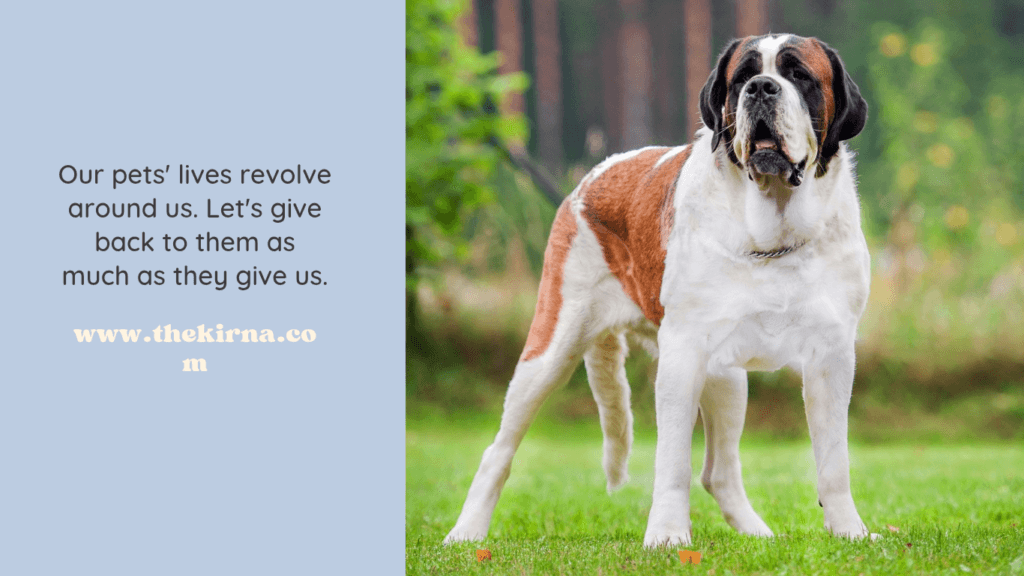
Imagine a snowy, windswept mountain pass in the Swiss Alps, where freezing temperatures and sudden avalanches once made travel a deadly gamble. For centuries, one hero stood between stranded explorers and certain disaster: the Saint Bernard.
With a heart as vast as their stature, these dogs didn’t just survive the harshest conditions—they thrived in them, forging a legacy as one of history’s most courageous canine rescuers.
The Saint Bernard’s story begins in the 17th century at the Great St. Bernard Hospice, a monastery nestled high in the Alps. Monks bred these dogs to assist in rescue missions, and their instincts quickly made them indispensable.
Picture a 180-pound powerhouse plowing through chest-deep snow, guided by an uncanny sense of direction and a nose that could sniff out a buried traveler beneath layers of ice.
Their broad chests and muscular legs acted like natural snowploughs, while their thick double coats shielded them from biting cold. But it wasn’t just brute strength that saved lives—their calm, intuitive nature let them comfort the injured, often lying beside stranded individuals to share body heat until help arrived.
What truly sets the Saint Bernard apart is their extraordinary blend of physical power and emotional intelligence. Built like furry draft horses, they could haul supplies, sleds, or even people over miles of treacherous terrain.
Historical accounts tell of dogs like Barry, a legendary Saint Bernard credited with saving over 40 lives in the early 1800s. Their stamina was unmatched; they’d trek for hours without tiring, driven by a quiet determination to protect.
Yet, despite their imposing size, these gentle giants rarely relied on force. Their secret weapon? A deep-rooted patience and an almost human-like understanding of crisis.
Today, Saint Bernards have traded avalanche gear for family couches, but their strength remains undeniable. Those soulful eyes and droopy jowls hide a surprising athleticism—they can still pull carts, climb slopes, and even “help” with chores (like accidentally rearranging furniture with a wagging tail).
Their loyalty is as sturdy as their frame, making them fiercely protective yet endlessly gentle with children. Modern Saint Bernards might not battle blizzards daily, but their DNA still hums with the resilience of their ancestors.
So, are they the strongest dogs on Earth? Measured by sheer muscle, breeds like Mastiffs or Kangal might rival them. But true strength isn’t just about lifting weight—it’s about carrying hope.
Saint Bernards didn’t just rescue bodies from the snow; they revived spirits. They remind us that strength means courage in chaos, warmth in the cold, and a willingness to stand tall when others falter. From Alpine hero to family guardian, Saint Bernard’s legacy isn’t just in their power—it’s in their profound, unwavering heart.
English Mastiff: The Colossal Protector
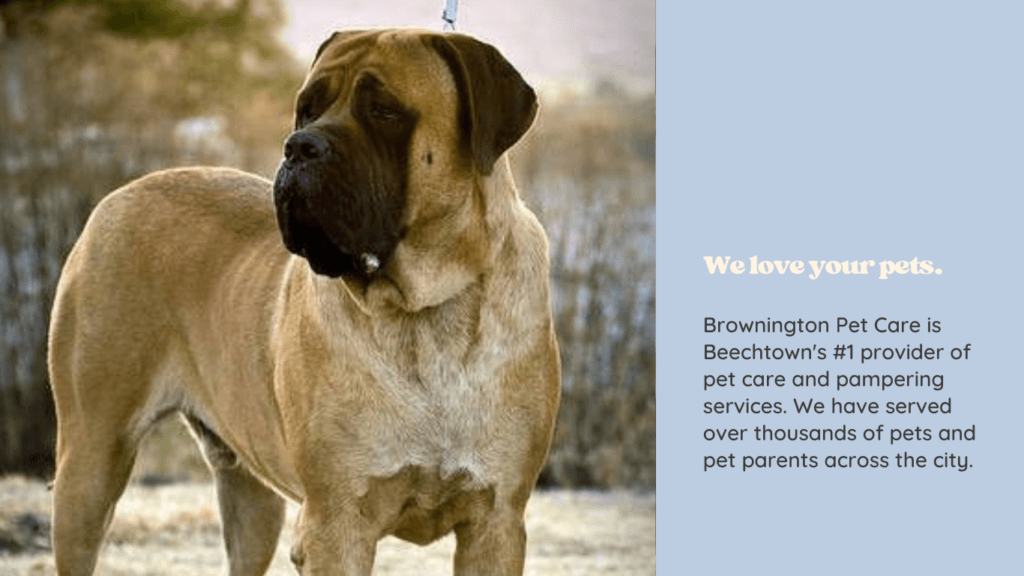
When it comes to sheer physical power and an awe-inspiring presence, few breeds command attention like the English Mastiff. Known as the “gentle giant” of the canine world, these dogs are living proof that strength and tenderness can coexist.
With males often weighing between 200–300 pounds and standing up to 30 inches tall at the shoulder, the Mastiff’s size alone makes it one of the most formidable dogs on the planet. But there’s more to this breed than just muscle and mass—their history, temperament, and loyalty make them extraordinary companions and protectors.
The English Mastiff’s legacy stretches back thousands of years. Ancient civilizations, including the Egyptians and Romans, prized these dogs for their unmatched courage and power. They were used in battle to intimidate enemies, guard livestock, and even hunt large game like lions.
Today, that protective instinct remains deeply ingrained. Mastiffs are naturally vigilant, always aware of their surroundings, and will instinctively position themselves between their family and perceived threats.
Yet, despite their warrior ancestry, they’re remarkably composed. They rarely bark unnecessarily and prefer to use their imposing stature as a deterrent rather than aggression.
What truly sets the Mastiff apart is its heart. Families who’ve shared their homes with these giants often describe them as “oversized lapdogs” with a soft spot for children. Their calm, patient demeanor makes them excellent with kids, and they’re known to tolerate even the most enthusiastic toddler antics with grace.
Stories abound of Mastiffs gently herding wandering toddlers back to safety or lying still as a pillow during pretend tea parties. This blend of protectiveness and gentleness is rare, making them ideal for households seeking both a guardian and a loving pet.
Of course, their physical strength is impossible to ignore. The breed holds the record for the heaviest dog ever documented: a Mastiff named Zorba, who tipped the scales at a staggering 343 pounds in the 1980s. While not all Mastiffs reach such extremes, their broad chests, thick bones, and muscular build give them immense power.
A Mastiff’s bite force is among the strongest of any breed, and their sheer weight can make them immovable when they choose to stand their ground. Yet, they’re surprisingly agile for their size, capable of quick bursts of speed when needed.
Owning a Mastiff isn’t without challenges. Their size means they require space to move comfortably, and their diet and veterinary care can be costly.
They’re also prone to drooling and shedding, which might test the patience of tidy homeowners. However, those who commit to the breed often say the rewards—loyalty, companionship, and an unparalleled sense of security—far outweigh the mess.
In a world where “strength” is often equated with aggression, the English Mastiff redefines the term. Their power is balanced by a serene confidence, their protective nature softened by an affectionate spirit.
Whether they’re lounging by the fireplace or keeping a watchful eye on the backyard, these gentle giants remind us that true strength lies not in dominance, but in the ability to love and protect without hesitation.
For those seeking a loyal guardian with a heart as big as its body, the Mastiff stands—quite literally—in a league of its own.
Alaskan Malamute: The Arctic Powerhouse
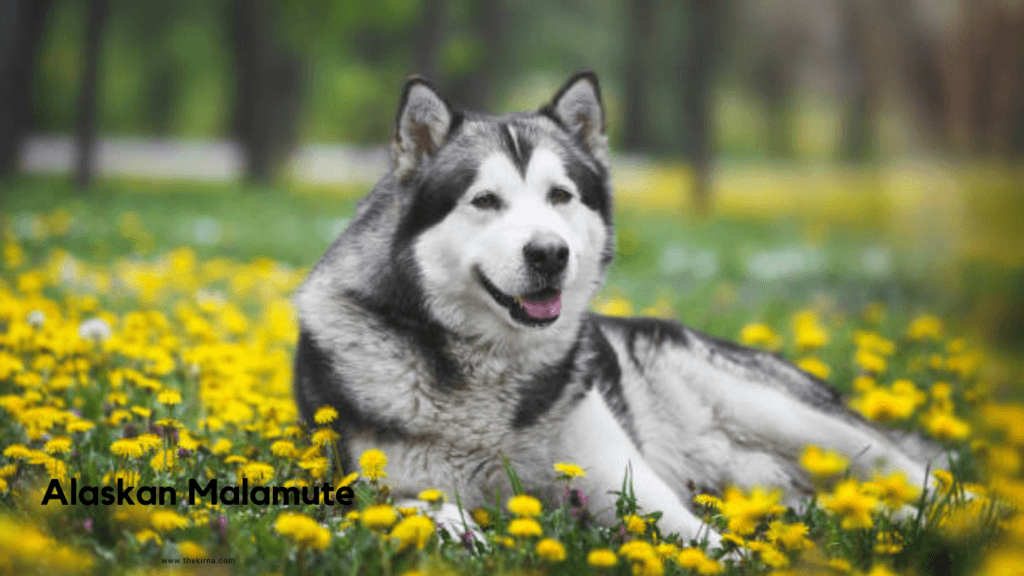
The Alaskan Malamute is one of the strongest and most resilient dog breeds in the world. Originally bred by the native Mahlemut people of Alaska, these dogs were designed for endurance and power, helping their owners transport heavy loads across vast, icy landscapes.
Their ability to pull sledges over long distances in extreme conditions makes them an essential part of Arctic exploration and survival.
With a muscular build, deep chest, and strong legs, the Malamute is built for power. Unlike other sled dogs bred for speed, Malamutes excel at hauling heavy loads. In fact, a well-trained Malamute can pull up to 3,000 pounds, showcasing incredible strength for its size. This makes them a top contender for the title of the strongest dog on Earth.
Their thick double coat is another remarkable feature. Designed to withstand sub-zero temperatures, it provides insulation against freezing winds and snow.
This fur, combined with their large, padded paws, allows them to move effortlessly across icy terrain without discomfort. Their bushy tail, which they often curl over their face while sleeping, helps them retain body heat during harsh winters.
Despite their power, Alaskan Malamutes are not just working dogs—they are also highly social and loyal companions.
They have a pack mentality, meaning they thrive in environments where they can bond with their human family. However, their independent nature and intelligence can make them a challenge to train, as they often like to test boundaries.
Malamutes require high levels of physical activity. Without regular exercise, they can become restless and destructive.
Activities like weight pulling, hiking, and running are great ways to keep them engaged. Due to their friendly and affectionate nature, they are not ideal guard
If you’re looking for a strong, intelligent, and hardworking dog with a loving personality, the Alaskan Malamute is an excellent choice.
However, owning one requires commitment—they need space, exercise, and proper training to thrive. For those who can meet their needs, these Arctic powerhouses prove to be loyal and loving companions for life.
Rottweiler: The Versatile Workhorse
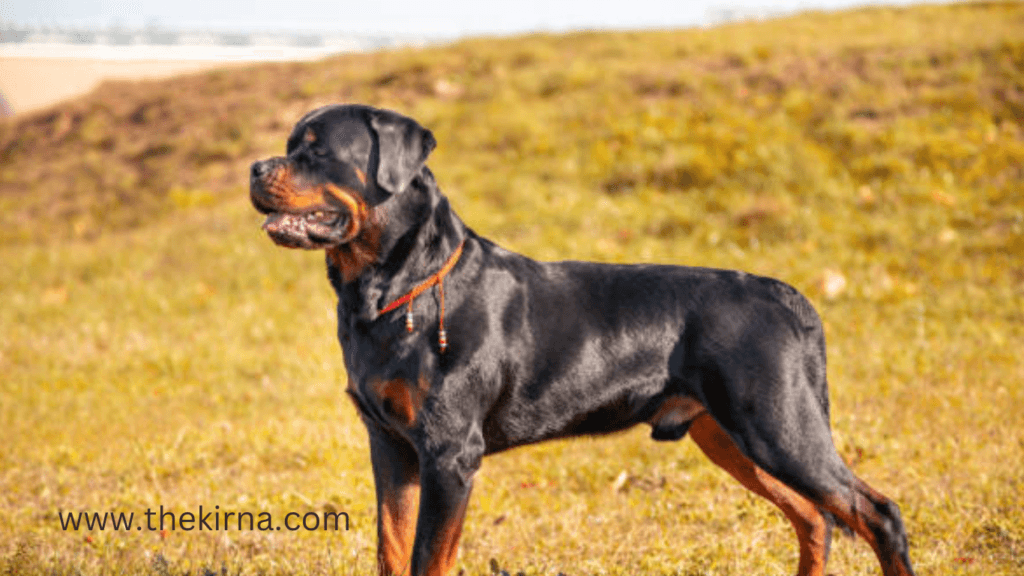
When it comes to strength, intelligence, and loyalty, few dog breeds can match the Rottweiler. Known for their muscular build and commanding presence, these dogs have a long history of working alongside humans in various capacities.
From ancient Roman times, when they were used to herd livestock and guard valuable goods, to modern-day roles in law enforcement, search and rescue, and personal protection, Rottweilers have consistently proven their worth as powerful yet dependable companions.
A Perfect Balance of Strength and Intelligence
Rottweilers are not just about raw power; they are also remarkably intelligent and adaptable. Their ability to learn commands quickly and follow instructions with precision makes them one of the most trainable breeds.
This combination of strength and intelligence allows them to perform a variety of demanding tasks, from pulling heavy loads to apprehending criminals.
Unlike some strong breeds that rely solely on brute force, Rottweilers excel because they can think critically and respond appropriately in high-pressure situations.
Natural Protectors with a Gentle Side
Despite their intimidating appearance, Rottweilers have a deep affection for their families. They are naturally protective, always alert to potential threats, yet they can be incredibly gentle and loving toward those they trust.
Their strong sense of loyalty makes them excellent family dogs, especially when raised with proper training and socialization. However, their protective instincts require responsible ownership; without proper guidance, they may become overly territorial or aggressive.
Unmatched Athleticism and Work Ethic
Physically, Rottweilers are built for endurance and power. Their broad chest, strong legs, and muscular frame allow them to perform strenuous tasks effortlessly.
Whether serving in police and military units, assisting in search and rescue missions, or simply being a reliable guardian at home, their unwavering dedication and work ethic set them apart.
They thrive on challenges and require regular exercise and mental stimulation to stay happy and well-balanced.
The Right Training Makes All the Difference
While Rottweilers have immense potential, their strength and intelligence can be misused without proper training.
Early socialization, obedience training, and firm yet positive reinforcement are crucial in shaping a well-mannered dog. A well-trained Rottweiler is not just a powerful guardian but also a loving and devoted companion who respects boundaries and understands commands instinctively.
Why Are Rottweilers Considered One of the Strongest Dogs?
Physical Power
Rottweilers have a dense, muscular frame designed for endurance and agility. Their broad chest and strong legs enable them to perform high-intensity tasks like pulling heavy loads and chasing down intruders.
Bite Force
A Rottweiler’s 328 psi bite force is one of the strongest among domestic dogs. This allows them to excel in protection work, ensuring they can restrain an attacker if necessary.
Intelligence and Trainability
Their strength isn’t just in their body—it’s in their mind. Ranked among the top 10 smartest dog breeds, Rottweieilers quickly learn commands and can differentiate between real threats and harmless situations.
Fearless Guard Dogs
Rottweilers have an innate protective instinct that makes them outstanding guard dogs. They are naturally wary of strangers but deeply loyal to their families, stepping up in times of danger.
Versatility
Few breeds match the Rottweiler’s ability to switch between roles. They excel in obedience, tracking, agility, and even therapy work, making them one of the most well-rounded strong dogs.
Other Remarkably Strong Dog
While the Rottweiler is a powerhouse, several other breeds are equally impressive in terms of strength, endurance, and working ability.
German Shepherd – The Military and Police Icon
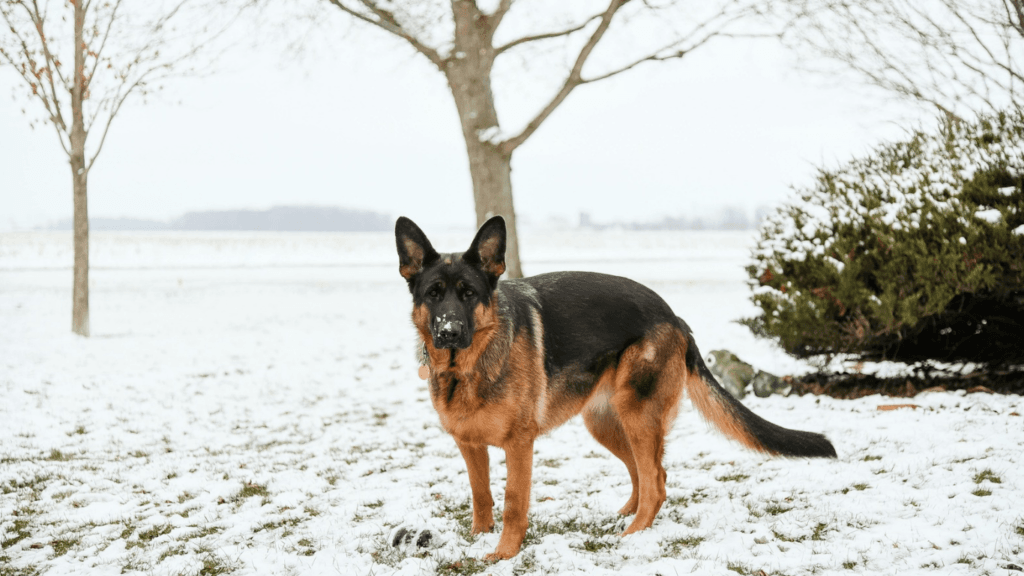
German Shepherds combine athleticism, intelligence, and power, making them the preferred breed for police and military work worldwide. Their bite force of 238 psi is strong enough to subdue criminals, and their endurance allows them to track missing persons for hours.
Cane Corso – The Roman War Dog
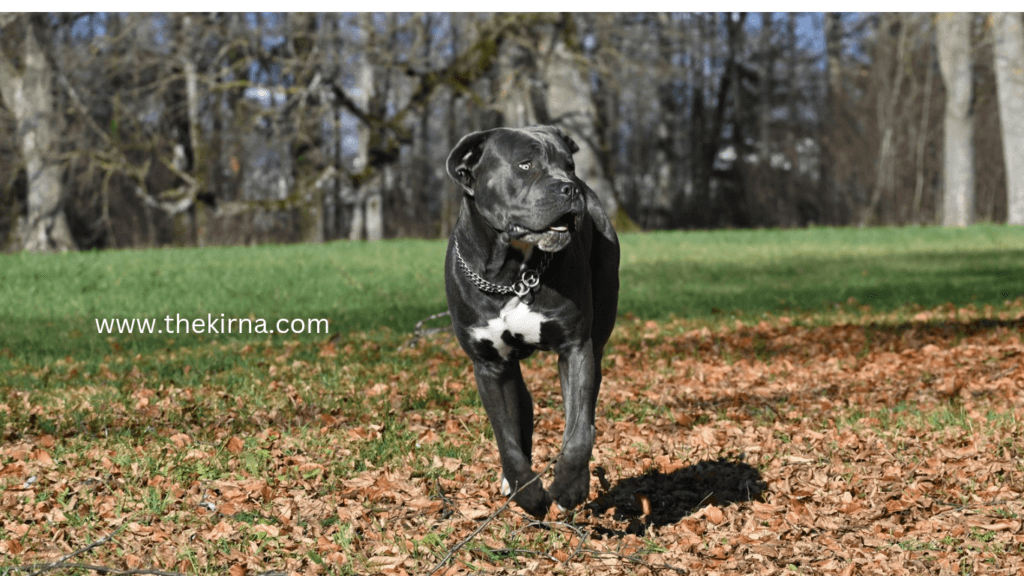
This Italian Mastiff boasts a powerful bite force of 700 psi, making it one of the strongest in the world. Historically used as war dogs, Cane Corsos are protective yet affectionate with their families.
Tibetan Mastiff – The Himalayan Guardian
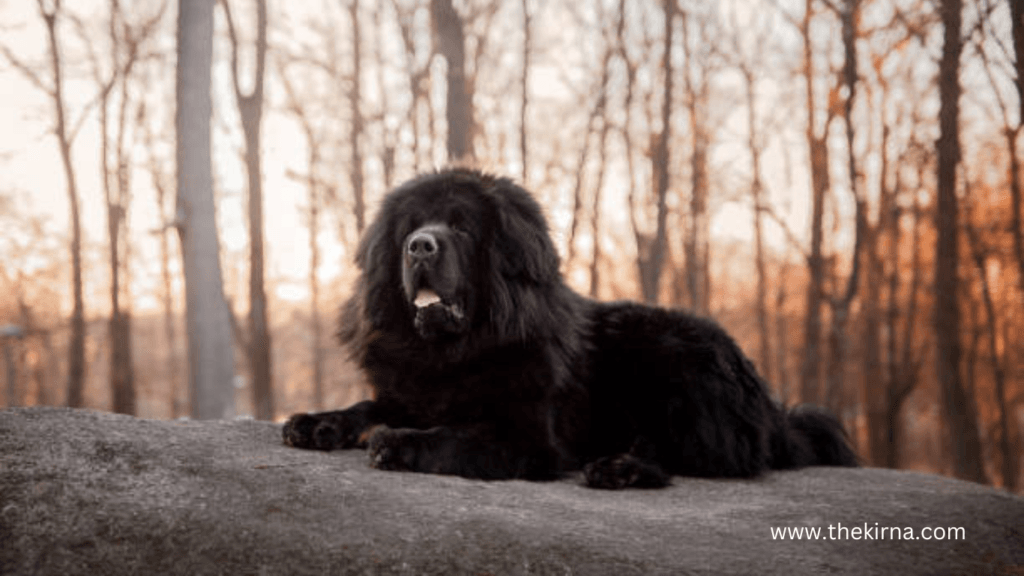
One of the largest and most powerful breeds, the Tibetan Mastiff was bred to guard monasteries from snow leopards and wolves. Their sheer size and dense coat make them imposing figures, often weighing over 150 lbs (68 kg).
What Defines a Strong Dog?
Strength in dogs isn’t just about bite force or size—it’s a combination of multiple factors:
Bite Force
Measured in psi, this determines how much pressure a dog can exert with its jaws. The strongest bite forces include:
Kangal – 743 psi
Cane Corso – 700 psi
Rottweiler – 328 psi
German Shepherd – 238 psi
Endurance
Breeds like Huskies, Malamutes, and Border Collies excel in stamina-based tasks. A strong dog should be able to work for extended periods without tiring.
Muscle Mass & Body Strength
Dogs like the Rottweiler, Cane Corso, and American Pit Bull Terrier have well-developed muscles, making them physically powerful.
Mental Toughness
A strong dog isn’t just about brute force—it needs the intelligence and courage to assess situations and respond appropriately.
Protective Instincts
Breeds like the Rottweiler, Doberman, and Belgian Malinois have a natural instinct to protect their family, making them exceptional guard dogs.
Choosing the Right Strong Breed for You
While powerful dogs can be incredible companions, they require proper training and care. Before bringing one home, consider:
Your Lifestyle
Do you have the time for daily exercise and training?
Strong breeds need mental stimulation to prevent destructive behaviors.
Space & Living Conditions
Large breeds like Rottweilers and Mastiffs need space to move.
Apartment dwellers should opt for breeds that adapt well to limited spaces.
Experience with Dogs
First-time dog owners may struggle with high-energy, strong-willed breeds.
Training consistency is key—strong dogs require a firm but loving leader.
Final Thoughts
So, what is the strongest dog on earth? The answer depends on how you define strength.
Raw Bite Force? The Kangal dominates.
Work Ethic & Intelligence? The German Shepherd excels.
Overall Power & Versatility? The Rottweiler stands out.
Ultimately, true strength isn’t just physical—it’s a blend of power, intelligence, endurance, and loyalty. Whether it’s the unwavering protection of a Rottweiler, the legendary bite force of a Kangal, or the endurance of a Malamute, every strong dog brings something special to the table.
No matter which breed you choose, one thing remains constant—a well-trained, well-loved dog will always be a strong and loyal companion.
FAQ

Hey there! Great question! When people talk about a “powerful” dog, it can mean different things—like physical strength, working ability, or even their impact on history or pop culture. Let’s break it down in a fun, friendly way!
Physical Powerhouses: If we’re talking raw strength, breeds like the Mastiff, Rottweiler, or Saint Bernard come to mind. Mastiffs, for example, can weigh over 200 pounds and have a history of guarding castles or pulling carts. Their sheer size and muscle make them literal giants! Rottweilers, with their sturdy build and confidence, were originally bred to herd cattle and pull heavy loads. And Saint Bernards? These gentle giants are famous for mountain rescues, using their strength to save lives in the snowy Alps.
Working Power: Some dogs shine in jobs requiring stamina, intelligence, and grit. The German Shepherd is a classic example—used in police, military, and search-and-rescue roles. Their ability to learn quickly and stay focused under pressure is unmatched. Similarly, the Belgian Malinois (like the ones you see in special ops) thrives in high-intensity tasks. Even sledge dogs like the Siberian Husky or Alaskan Malamute show incredible endurance, pulling heavy sledges across icy terrains for miles.
Legendary Icons: Some dogs earn their “power” status through fame or heroism. Take Balto, the Siberian Husky who led a lifesaving serum delivery during a 1925 diphtheria outbreak in Alaska. Or Hachiko, the Akita remembered for loyalty, waiting years at a train station for his deceased owner. These stories remind us that a dog’s “power” isn’t just physical—it’s also about the heart.
Family Protectors: For many, a dog’s power lies in their loyalty and protective instincts. Breeds like the Doberman Pinscher or Bullmastiff are natural guardians, blending strength with a deep bond for their families. Even smaller but fearless breeds like the Boxer or Staffordshire Terrier pack a punch when it comes to courage.
But here’s the thing: any dog can be “powerful” in their own way! A tiny Dachshund might have the bravery of a lion, or a rescue mutt might show unstoppable resilience. What matters most is how they’re raised—love, training, and socialization shape a dog’s true potential.
So, who’s the most powerful? It depends! If you need a working partner, a Malinois might be your hero. If you want a gentle giant, a Saint Bernard could steal your heart. Or maybe your own pup, with its unique quirks, is the ultimate powerhouse in your life! Either way, dogs remind us that power isn’t just about muscles—it’s about heart, loyalty, and the amazing things they do alongside humans.
The strongest dog in the world is widely considered to be the Kangal.
This Turkish breed is famous for its incredible bite force, which can reach up to 743 PSI (pounds per square inch)—the strongest of any dog. Originally bred to protect livestock from predators like wolves and bears, Kangal are powerful, fearless, and highly protective.
Apart from the Kangal, other strong breeds include the Tibetan Mastiff, known for its massive size and thick fur, and the Rottweiler, which has great muscular strength and endurance. The American Pit Bull Terrier is also incredibly strong for its size, often excelling in weight-pulling competitions.
Strength in dogs is not just about bite force or muscle power—it also includes endurance, intelligence, and loyalty. A well-trained, properly socialized strong dog can be a loving companion and an excellent guardian.
However, such powerful breeds require responsible ownership, training, and socialization to ensure they remain friendly and well-behaved.

Yes, the Kangal dog is banned in India. The Indian government has restricted the import and breeding of several foreign dog breeds, including the Kangal, due to concerns about public safety and handling challenges.
These dogs are extremely powerful, have a strong guarding instinct, and require experienced owners who can train and manage them properly.
Kangal was originally bred in Turkey to protect livestock from predators like wolves and bears.
They have the strongest bite force of any dog and are highly territorial. Inexperienced owners may struggle to control them, which can lead to aggression or safety risks.
In India’s hot climate, Kangal may also suffer from heat stress, as they are naturally suited to colder regions. Additionally, their large size and high exercise needs make them difficult to keep in small homes or apartments.
If you are looking for a strong, loyal dog in India, consider breeds like the Indian Mastiff (Bully Kutta) or Rajapalayam, which are well-adapted to the local climate and environment. Always check legal regulations before getting a dog breed to ensure it is allowed and suitable for your lifestyle.
The phrase “lazy dog” is most commonly associated with the famous pangram:
“The quick brown fox jumps over the lazy dog.”
This sentence is used to test fonts and keyboards because it contains all 26 letters of the English alphabet.
Now, if we talk about what a lazy dog means, it usually refers to a dog that prefers to relax, sleep, or move slowly instead of being active.
Some dog breeds, like Bulldogs, Basset Hounds, and Great Danes, are naturally less energetic and love lounging around. However, just like humans, laziness in dogs can also be due to age, health issues, or simply their personality.
Interestingly, in a metaphorical sense, “lazy dog” can also be used to describe a person who avoids hard work or prefers comfort over effort. It’s often a humorous way to refer to someone who loves relaxation more than activity.
But let’s be honest—whether lazy or active, every dog is adorable in its own way! A dog that enjoys resting can be the perfect cuddle companion, making life calmer and happier.
More Info For You


1 thought on “What Is the Strongest Dog on Earth? Meet the Canine Titans of Strength”